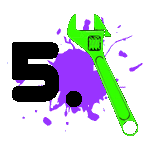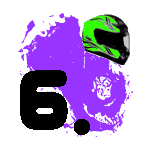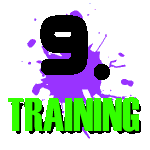
1. Budget
I know that sounds like a deadly dull way to start what you are imagining is a thrilling pastime, but a failure at step one will mean you won't get to the exciting part, where you get to go fast. Racing requires a substantial investment, or at least a substantial willingness to spend all your money on racing, so it's best to be prepared for that by having a realistic idea of how expensive this will all be. Perhaps you may want to consider a 3 to 5 year racing plan, budgeting for all of the following (see steps two to ten) perhaps a few each year. Each and every one of these steps is very expensive – hundreds and possibly thousands of dollars or more, and time consuming, so plan ahead carefully and budget on a timeline that is reasonable for your racing budget.
|

2. What kind of racing (series, class)
Find out what racing series run in your area, look at their schedule, the locations of racetracks, study the series rules, and look up the racing entry fees, attend an event, talk to some of the racers and see how the events are organized and run. Find out what qualifications or licensing you will need to run in that series. Once you have decided on a racing series, you need to consider what class to run it – this may determine what kind of racing motorcycle you will look for, so it's an important consideration. You can find out from other racers what expenses may be involved in the different classes offered. You may want to consider a bike you can run in more than one class or series. Road racing isn't for everyone, and you may want to take a look at flat-track racing, motocross, trials, supermotard, or enduro racing. Off-road racing often has less expensive entry fees, a longer season with more available track time and in some cases less expensive equipment.
|

3. What qualifications (your racing license)
Regardless of what qualifications or licensing are required for the racing series you plan to race in, you should attend a racing school to get some experience on the track. Some racing schools will have bikes you can use, so you can try out a school and see if racing is for you, without investing in a racebike. You may be required to attend a school to get the qualifications or license you need to race in the racing series you select. If you're lucky, there may be more than one option available for qualification for your racing license, and you can consult with people who have attended the schools to find out which ones will best prepare you for racing.
|

4. Buy a bike
This is NOT step one, don't start your adventure in racing here! Depending on the racing series you've decided to race in, and the class you plan to run in, you may have only a few choices for a suitable bike. By the same token, if you get your racebike first, you may have limited options for racing it. If you are racing in a stock street series, you may not have to do much to prepare your bike, but if you are racing a street bike in a vintage racing series, there may be a lot of work required to make your bike suitable for racing; investigate parts availability before you buy. Even if you are buying a bike that is already prepared to fit the rules of the series you plan to race in, you will still have to replace parts, which can be challenging and time consuming in the vintage world. Even with a modern bike, parts availability may be an issue. Do NOT start your bike build project with a crashed bike, although it seems a popular choice to select a crashed street bike to start a budget build project, the logic is flawed. To go fast, you want the straightest, least crash damaged frame, rims and suspension possible, so even if you have a frame jig to work with, don't start your bike build project with a crasher.
|

5. Prepare your bike
You will likely need to safety wire (also called lockwiring) your bike – the series rules will tell you what parts on your bike need to be lockwired. You will get to know your bike much better through this process, which will also expand your vocabulary and allow you to experiment with acupuncture. Some racing series will require you to use a belly-pan catch-basin or other fluid retention system. If you are running in a vintage series, your bike must meet period correct standards as well as safety requirements. Read the series rules carefully and consult with other racers to find out what is involved in preparing a race bike for your series. Preparing your bike will also involve steps like oil changes, spark plugs, chain and sprocket gearing changes, parts cleaning, new bearings and seals if it's a vintage bike, and other maintenance. Read more about preparing a vintage racebike, and if you are preparing your own bike you will find this Build Project Check List useful. If your racing learning curve involves crashing, you will also be replacing parts and repairing crash damage.
|

6. Gear and Safety Equipment
Most racing series will require you to have the latest and best personal protection safety equipment. Usually this means the newest Snell certified helmet (Snell 2010 standard), a CE-approved back protector, one piece leather racing suit with armor, racing boots with ankle support, and good quality gauntlet racing gloves. Some road-racing series will let you race in a two-piece leather suit that zips together, but it's not recommended. While not required in Canadian racing, ear plugs and a mouth guard are also valuable items of safety gear to consider. I can't imagine wearing leathers without a good suit of 'undergear' a slippery, breathable wicking layer that makes wearing leathers much easier and more comfortable. If you race in a series that runs in all weather, a suit of rain gear that fits over your leathers will prevent them from getting all-weekend-wet. All of your safety gear should be new, top quality and in excellent condition, and you will likely be required to submit your safety gear as part of your technical inspection at the track.
|

7. Equipment
To haul your race bike, safety gear, camping equipment and all the other racing gear, you will need a trailer to tow behind your car, or a truck, or a rental vehicle for each racing weekend. Along with a truck and/or trailer, you will need tie-downs for your bike, a wheel chock or pit stand (most racing series don't allow sidestands on bikes, so you'll need some other way to hold your bike up). If your racing series allows you to use slick tires, you'll need a way to change tires at the track for a rain-race (or a second set of rims mounted with rain tires and then you'll only need to change wheels) and tire warmers too. A class that runs DOT (street legal treaded) tires may be a less expensive option. Even if you already have a well-equipped tool-box, you will probably need more tools (like safety-wire pliers) when you're preparing your racebike. Your racing series may require a transponder for timing and scoring, and you may also want a lap-timer to keep track of your skills development while you're learning. You will probably want a pit-tent, awning or pop-up for shade at the track. If you race a vintage bike, you may need a welder, or braising equipment, and a range of fabricating tools and equipment are very useful too. Many Canadian racetracks will allow racers to camp onsite for the racing weekend, so you'll want a tent and sleeping bag, cot and chairs, cooking equipment etc.; unless you can stretch your budget to rent an RV or motorhome, or hotel/motel near the track for the weekend, if you're not the camping type.
|

8. Supplies
Racing involves a lot of consumable materials and supplies, in addition to the equipment you will only have to purchase once. Tires are often the biggest consumable expense, depending on what tires are allowed in your racing series, and how quickly your bike will wear them out. Even if you don't need new tires every weekend, you'll need race fuel, motor oil (and injector oil if you run a two-stroke) as well as brake cleaner, hand cleaner, and lots of other consumables (including food for you) for each race weekend. Equipment like tie-downs for your bike, you will probably only have to buy once, but there are consumable supplies that you will need to restock and budget for; oil and filter, spark plugs, brake pads, bearings and seals, gaskets, etc. you probably know about from street bike riding, but there is more involved with a race bike. The bike build Check List includes consumables.
|

9. Training
Once your race bike is prepared, you and your bike will need some training time together. Book some trackdays or open lapping sessions for practice time, and if you haven't already done a track school to qualify for your racing license, book that too. Consider cross training opportunities like a dirt-bike school, and don't neglect your general fitness training too. Racing requires dexterity, balance, endurance and agility, and if your general fitness is poor you will find racing physically draining. Yoga is excellent fitness training for motorcycle racing, and I enjoy skating (balance) and skiing (cornering) in the winter. Track schools and trackdays with training are a good opportunity to learn new tracks before you race on them (more track school links).
|

10. Racing
Plan the first racing weekend and schedule your first season. Your first racing weekend will be one of the most exciting weekends you will ever spend. Devote some time to planning the practical parts, transportation, food, accommodations, make a clothing packing list, and another list for tools, equipment and gear to pack (link) – the more you can plan ahead the less stress you'll have on your first race weekend. Schedule your whole race season, book time off work, set aside time for bike maintenance, buying supplies, training, and for loading/packing and unpacking/unloading, before and after each race weekend. Organize a pit-crew, a riding buddy who will come and help you out for the weekend, or a friend or family member that can help out with loading and unloading. I thought it was either just me or just 'Murphy's Law' in action, but I've since talked to other racers and they shared the same experience - in your first season of racing, everything will take longer than you expected. If you think you can pack up in an hour and drive to the track in two hours, it will take six hours. The same thing applies to acquiring parts and supplies at the last minute - even if it's something simple like duct tape that you think you can buy anywhere, if you leave it until the last minute it will be impossible to find. Build time into your first seasons racing schedule for the unexpected to be accommodated.
|
More advice...
Avoid crashing.
It's expensive at best and painfully injurious at worst. Some racers consider crashing an inevitable part of racing; I don't quite agree with that, although I think a racer has to be prepared for the eventuality. Still, the less of it you do, the easier racing will be for you. Have a plan in place if the worst does happen – use the buddy system, and pair up with another racer – use an ICE FORM - like this one - and talk about your crash support plan.
Be informed about the eventualities; find out if your insurance will cover you if you injure yourself racing and can't work, talk to your employer, insurance broker and consider medical coverage.
Always thank your sponsors.
Even if you don't have sponsors, there are lots of other people to thank when you go racing. The organizers, marshals, medical staff/ems, volunteers and officials that make your racing possible deserve your wholehearted thanks at the end of each racing weekend.
|
|











